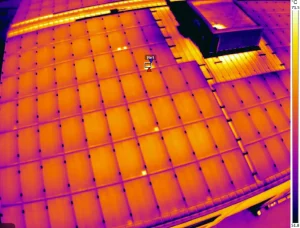Ever looked at the back of a phone charger and seen “500mA,” then looked at a solar panel spec sheet and seen “8.5A”? You’re dealing with two different scales of the same thing: electrical current. Understanding how to convert between milliamps (mA) and amps (A) is a fundamental skill for anyone, from DIY electronics hobbyists to professional solar installers.
This comprehensive guide will not only show you the simple formula but also explain why this conversion is critical for designing safe and efficient systems. We’ll cover practical examples and provide tools to make it easy.
What’s the Difference Between Milliamps and Amps?
Think of electrical current like water flowing through a pipe.
- Amps (A) are like gallons per minute. It’s the base unit for measuring a large, powerful flow of electricity. You’ll see amps used for major appliances, car batteries, and, of course, solar panels.
- Milliamps (mA) are like drops per minute. A milliamp is simply 1/1000th of an amp. It’s used for measuring the very small currents that power delicate electronics like sensors, LEDs, and the components inside your smartphone.
Using the right unit prevents you from writing out tiny decimals (like 0.05A) or massive numbers (like 50,000mA), making specifications easier to read and understand.
How to Convert Milliamps to Amps (mA to A)
This conversion is straightforward because you’re just moving the decimal point.
The Rule: To convert milliamps to amps, divide the milliamp value by 1,000.
Formula: Amps = Milliamps / 1000
Practical Example: Your new smart home sensor has a current draw of 150mA. To understand its impact on your power system, you convert it to amps: 150 mA / 1000 = 0.15 A
It’s that simple.
How to Convert Amps to Milliamps (A to mA)
To go the other way, you do the opposite.
The Rule: To convert amps to milliamps, multiply the amp value by 1,000.
Formula: Milliamps = Amps * 1000
Practical Example: You need to select a small fuse for a circuit rated at 0.5A. Fuse ratings are often in milliamps. 0.5 A * 1000 = 500 mA
You’ll need a 500mA fuse.
Milliamps to Amps Conversion Calculator
For quick, error-free conversions, use our online calculator.
(This section would contain an interactive calculator tool on the actual webpage.)
[Online Calculator Tool Placeholder]
- Input field for mA/A
- Dropdown to select conversion direction (mA to A or A to mA)
- “Convert” button
- Display field for the result
Quick Conversion Chart
Of course. Here is the conversion chart in a table format.
| Device Example | Current (mA) | Current (A) |
| LED Indicator Light | 20 mA | 0.02 A |
| Small Sensor | 100 mA | 0.1 A |
| USB 2.0 Port | 500 mA | 0.5 A |
| Smartphone (Fast Charging) | 1000 mA | 1.0 A |
| Tablet Charger | 2000 mA | 2.0 A |
| Large Solar Panel | 8500 mA | 8.5 A |
Why This Matters: Applying Conversions in Solar Systems
While the math is easy, the application in a solar power system is where precision becomes crucial. A simple conversion error can lead to inefficient systems, damaged components, or serious safety hazards. The basic formula is just the start.
Temperature Changes Everything
A solar panel’s current output is rated under standard test conditions (25°C or 77°F). But on a hot roof, that panel gets much hotter. As temperature rises, the resistance in your wiring increases, affecting the true current your system can handle.
- The Pain Point: Ignoring heat can lead to undersized wires that pose a fire risk and cause a significant drop in system efficiency.
- The Pro-Tip: Professionals use temperature correction factors outlined in the National Electrical Code (NEC) to select the right wire gauge. This ensures safety and performance in real-world conditions.
The 125% Safety Rule
Solar circuits are considered “continuous loads.” The NEC mandates that your wires and overcurrent protection (fuses, breakers) must be sized to handle 125% of the expected maximum current.
- The Pain Point: Sizing your components for the exact calculated amperage leaves no safety margin, leading to nuisance tripping of breakers and overheating.
- The Pro-Tip: Always multiply your final calculated system amperage by 1.25 to determine the minimum rating for your wires and breakers. For a 10A system, you need components rated for at least
10A * 1.25 = 12.5A.
Mismatched Panels in Parallel
No two solar panels are perfectly identical. There are always minor manufacturing tolerances. When you connect panels in parallel, these small differences can cause current imbalances, reducing the overall power harvest.
- The Pain Point: Simply adding up the rated current of each panel can overestimate your actual power output.
- The Pro-Tip: For large arrays, factor in a small tolerance percentage (as outlined in UL 1703 standards) to get a more realistic expectation of total current. This ensures your charge controller is sized correctly.
For more on system design, see our related articles on Solar Panels in Series vs. Parallel and Calculating kWh to Amps.
Common Pitfalls to Avoid
- Ignoring Temperature: Never use the standard-condition current rating to size wires in a hot climate.
- Forgetting the 125% Rule: This isn’t a suggestion; it’s a critical safety requirement.
- Using the Wrong Multimeter: Always use a True-RMS meter to accurately measure the current from an inverter.
- Mixing Units: Double-check every calculation to ensure you haven’t mixed mA and A. A 20mA fuse is not the same as a 20A fuse!
- Overlooking Battery Specs: Your solar array’s output current must not exceed the battery’s maximum charge current rating. Too much current can permanently damage your battery.
Frequently Asked Questions (FAQ)
Is 1 amp the same as 1000 milliamps? Yes, they are exactly the same value. 1A = 1000mA.
How many amps is 50 mA? To convert 50mA to amps, you divide by 1000. So, 50mA is 0.05A.
Why does my 100mA sensor read as 0.098A on my meter? This is very common and usually due to a combination of factors: the inherent accuracy tolerance of your meter (e.g., ±2%), minor voltage drop in the wiring, or the sensor’s own operational tolerance.
Final Thoughts
Converting milliamps to amps is a simple but powerful skill. It’s the language of electricity that allows you to safely power your electronics and design efficient, reliable solar systems. By moving beyond the basic formula and understanding the real-world factors like temperature and safety regulations, you can ensure your projects are built to last.
High-quality components, like a Sungold Flexible Solar Panel, provide clear and accurate electrical specifications, giving you the reliable data you need for these critical calculations.









